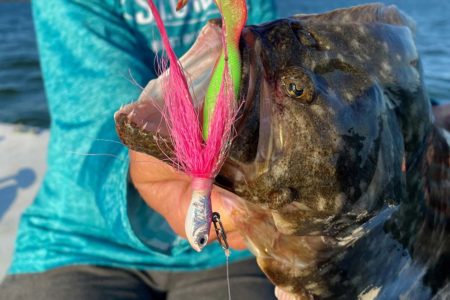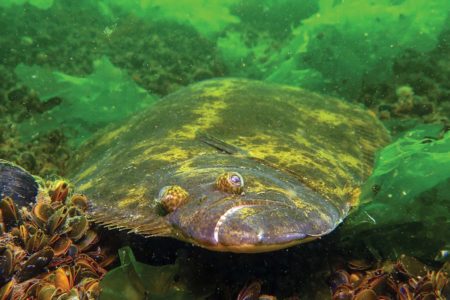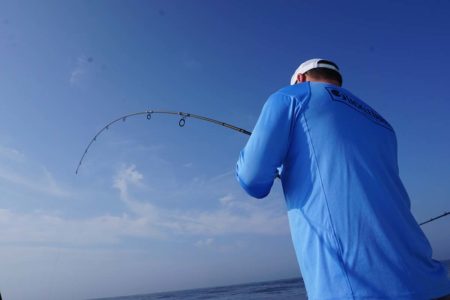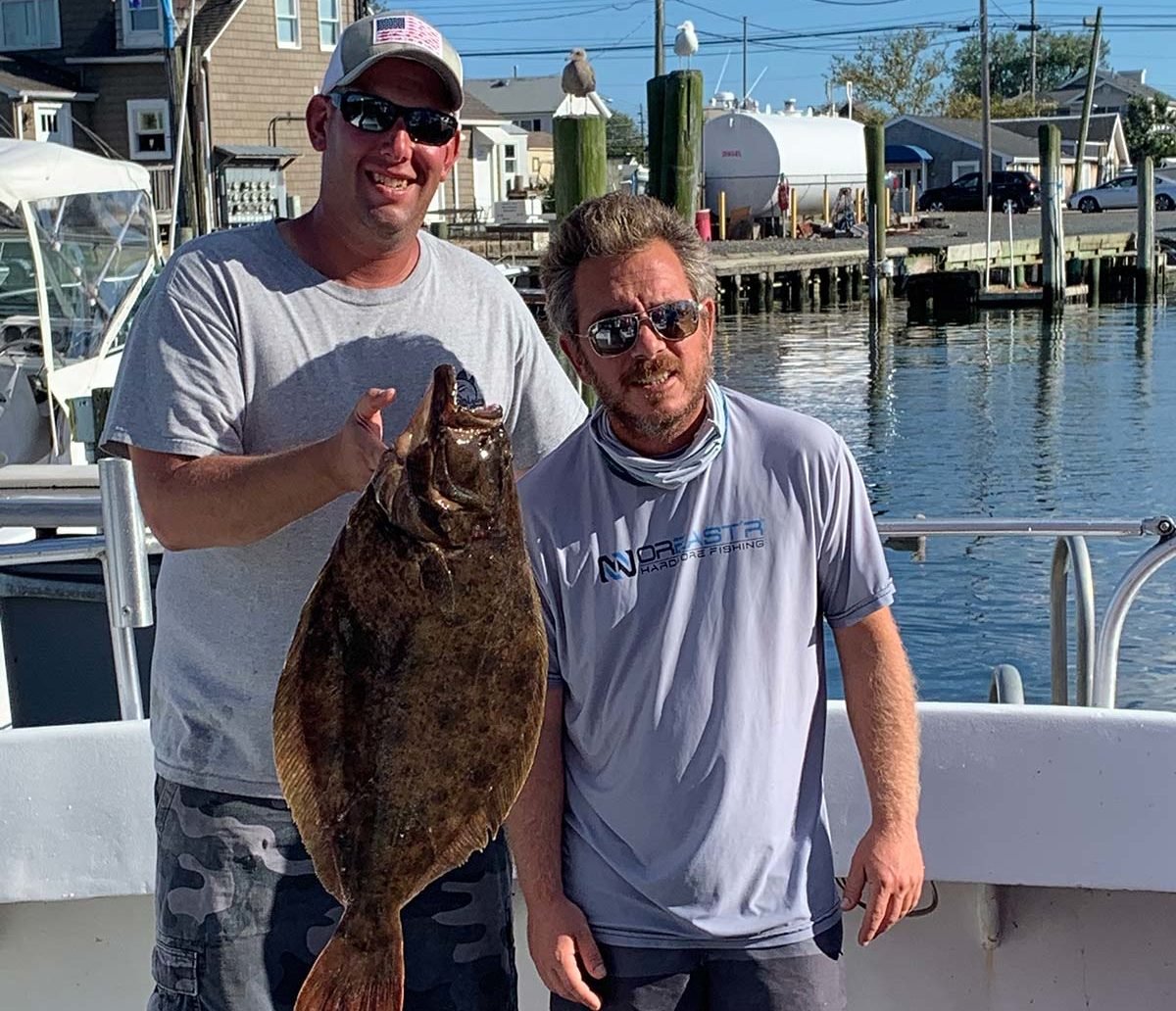
August is “rubble rousing” time for hunting jumbos!
Each year many of us begin fluke fishing in the quiet backwaters. By mid to late July however, a lot of the focus turns to the local reef sites in the hunt for larger fish.
But as your location changes, your techniques of boat handling and jigging both need a complete and total remake of what you were doing just a few weeks prior. While not as casual as a slow back bay drift, the efforts are worth the spoils.
Boat piloting on a reef site is the primary skillset that will separate you from others. Thorough knowledge of the reef that you are fishing will help you understand the way this fertile fishing zone is laid out. Simply going to the reef and setting a drift with lines dragging on the bottom will keep you busy rigging rods all day long. Spend some time with a very critical eye on your sounder.
A reef site is not necessarily a giant mine field! Some spots are super snaggy, while others may be semi-broken and sunk in the sand. Practice makes perfect!
No Man’s Land
What is your drift direction and speed like today? Can you line your drift up so that you drift along the side of this wreck, rather than across it? This is going to mean that the helmsman needs to keep his eye on the screen and his hands on the engine controls much of the day, but boy is it worth it! A tank on the seas floor is not just a tank; to prevent the heavy tank from sinking into the sand, first a hopper full of rubble is dumped on the spot, then the tank is set atop this rubble. So, this rubble may extend out some distance from the edges of the tank. So, a cluster of tanks is also a cluster of rubble piles. A pile of concrete rubble can be fished very effectively as well, just stay on the edges; that means don’t just go to the high spot to start from there.
Some anglers have some early summer success fishing an area that I refer to as “no man’s land.” In the areas off Atlantic City and Cape May for example, the reef sites are around 10 miles from shore. When the fish are pushing out to these as waters being to warm, look for a deep-water trench leaving the inlet area headed toward your local reef site. As fluke leave the bays and inlets, they will cover some ground as they head toward the reef site where they will congregate for the warmer months. This “No Man’s Land” is used almost as an expressway if you will. Brigantine Shoals, and McCrie Shoal are excellent examples of staging areas between a reef site and your inshore waters.
Drift speed is the variable that will affect your game plan and cause you to adjust on the fly. Wind and waves are the primary driver of your drift speed when you are fishing the reefs. Once you know the direction of your drift, you can run up to the edge of a spot, drop the baits down and drift until you come up on your next wreck. Drifting over the next piece requires a very vertically presentation to avoid being immediately snagged. Dragging weights across the rubble will have you snagged up way too often, so bouncing straight up off the bottom means much less knot tying and more fish caught.
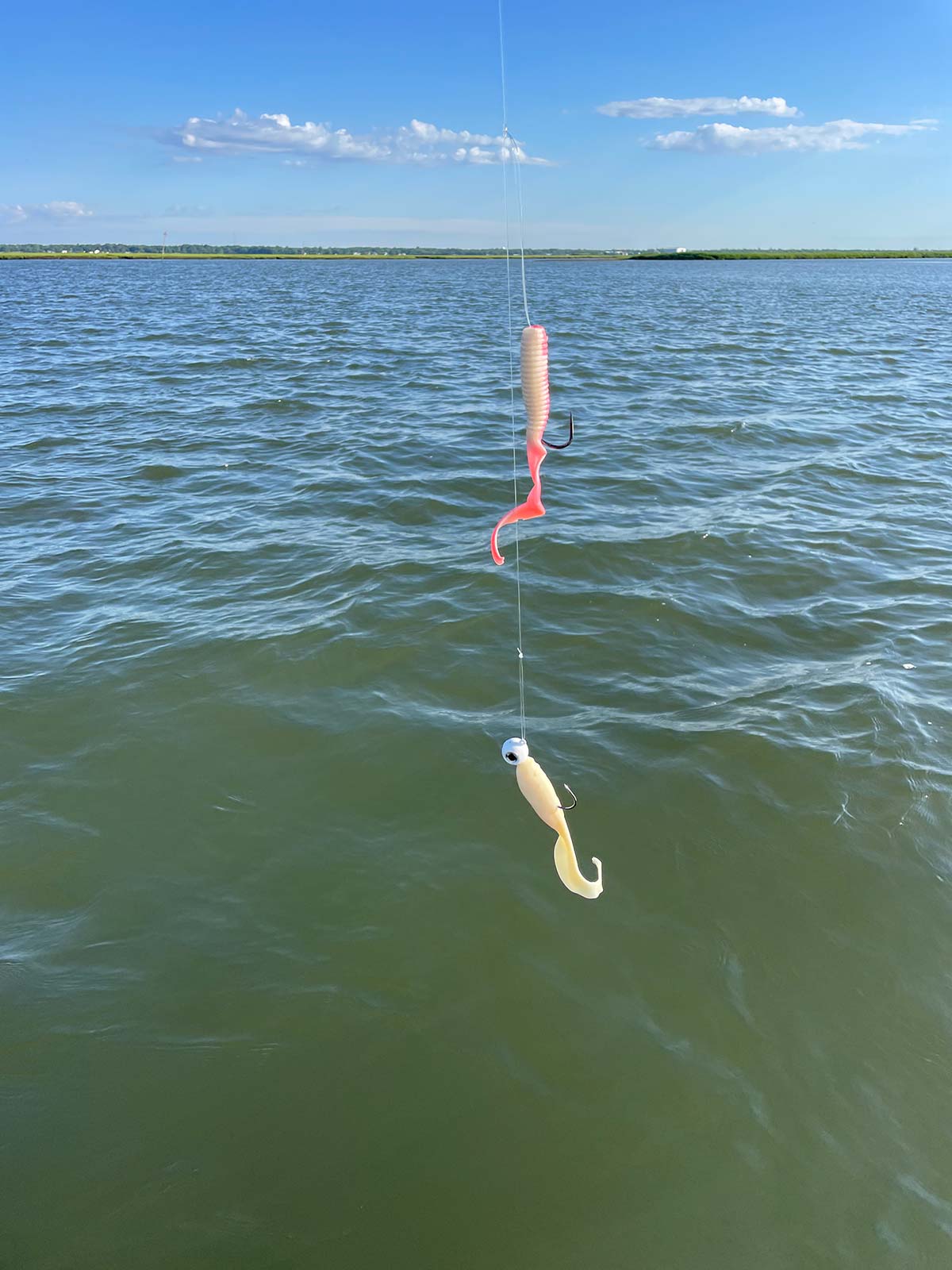 |
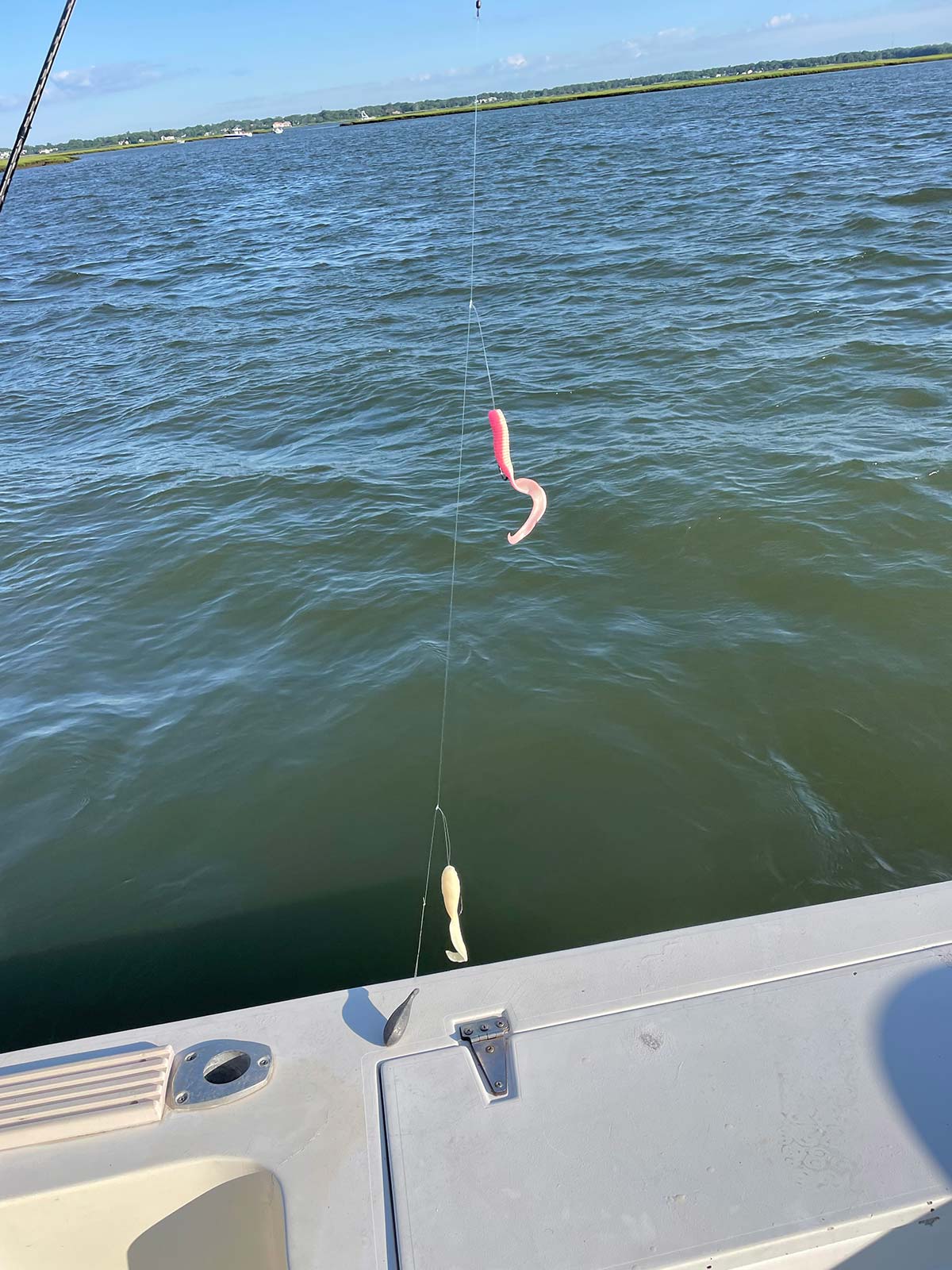 |
| The ball jig and teaser (left) and Chicken Rig (right) are two of the author’s “go to” rigs for fluke fishing the ocean structure. | |
Vacuum The Rugs
Let’s get deep into the rigging that has changed the way we fish for fluke. In years past, we would drag a baited bottom rig for fluke, but focusing on the sticky bottom meant re-rigging constantly. In recent years, this rigging has evolved to help our boat handling and drift manipulation game create a new way of fishing for fluke. I’ve spent many days on the “fluke vacuum” known as Fish Monger II run by Capt. Jerry Postorino, who has an uncanny ability to put limits of excellent sized fluke onboard for his charters. He has shared many of these details with me that I am happy to share with you now – with his blessing of course.
There are two common rigs that we use on the reef sites. First is a ball jig and teaser which are an adjustable fish slayer for those who prefer a very connected way to fish. A good quality ball jig with a large hook is perfect here to accommodate a 6-inch Gulp Grub or Mullet and still have plenty of hook gap. Weights ranging from 1-1/2 up to 6 ounces will be used during most days switching out depending on conditions. Tie a dropper loop around 16 inches above your jig and loop an 9/0 Owner Ballyhoo hook onto your dropper loop. Add another Gulp Grub or Fishbites Fight Club and you’re ready for action. Bucktails and silicone skirted jigs still get their playing time by some, but I have not seen one outproduce a baited ball jig.
The Chicken Rig is another very popular rig for this game. It is easily adjustable as the current and tidal flow changes throughout the day. As the conditions change it’s as simple as changing your sinker. Start with a 4-foot length leader and tie a double surgeon’s loop at the bottom. Tie a dropper loop around 10 inches up, then another dropper 16 inches above that. A sinker can be hung on a breakoff loop of lighter mono to the bottom if you prefer. Pass your folded dropper loop through the same Owner Ballyhoo hook’s eye and lock on to your dropper loops. If your drift is slower than a knot, this will work very well. If the drift is faster than a knot, replace the hooks with light 3/8-ounce fluke jigs which will improve your catch rate dramatically.
Small silicone skirted jigheads with oversized hooks work very well here too. Light jigs with large hooks in the quarter- to half-ounce size on the chicken rig when the drift is really moving. Even adding a small egg sinker on the dropper loop ahead a plain hook will make the baits track in a much more effective way.
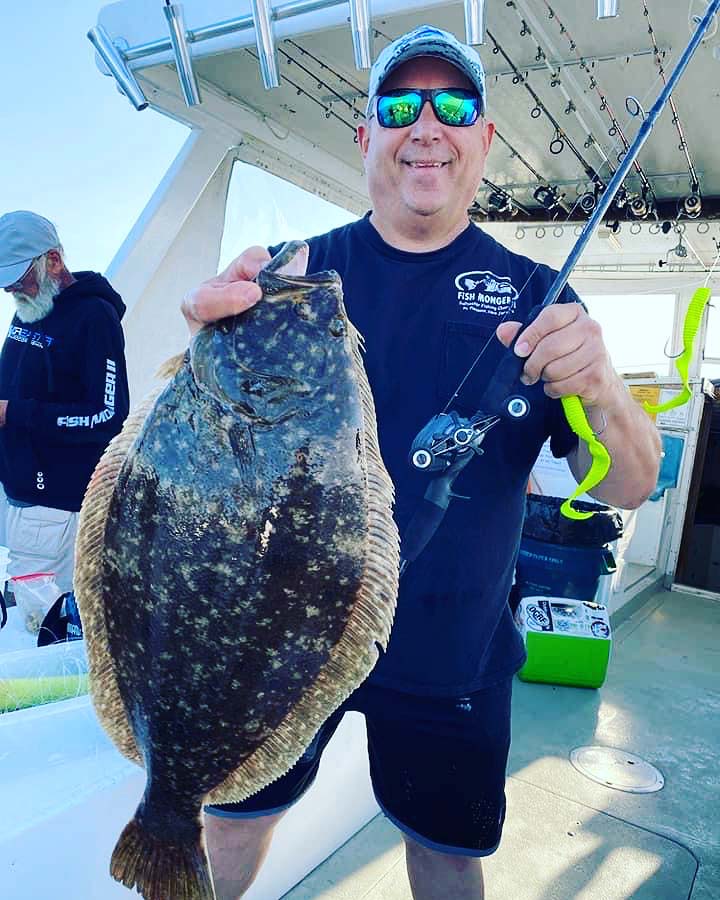
Bait & Tackle
Like so many others, I find Gulp 6-inch Grubs and Mullet are on point for this game! In our local New Jersey and Delaware regional waters, pink shine, pearl, glow and chartreuse all seem to have their days when one color will outproduce all others combined. The “blue fuze” is magic on the Nantucket Shoals, but locally I find it falls very flat.
I prefer a Gulp Grub on the ball jig as it fits very well; the Swimming Mullet is awesome on the teaser hook. They are chunky enough that they make a great teaser without looking overly large. I give the nod to 30-pound test fluorocarbon leader for these rigs. And sometimes a strip of fresh cut bait gets them going really good! Sea robin or bluefish strips are a favorite; a thin long strip is much preferred over a bait that is too thick, again closing the hook gap sometimes preventing a solid hookset.
If the drift is not overly fast, I prefer the ball jig. A rod that will comfortably fish between 2 and 5 ounces is my sweet spot with 20-pound braid on a 4000 size spinning reel is perfect; 30-pound fluorocarbon leader matches this system nicely. Conventional reels on trigger grip rods are a favorite way to handle heavier weights without feeling under gunned by a 6-ounce day. If conditions are pushing you toward an 8-ounce kind of drifting day, a conventional reel and slightly heavier rod will have you right in the wheelhouse as your spinning gear will be under powered just by the rig alone.
When set up on a drift, cast your ball jig into the direction that you are drifting. As it falls to the bottom be ready to quickly give your jig life when it arrives on paydirt. Work it back to you as you drift toward your bait. When it is directly beneath you, be ready to pay out a bit more line to stay very near the bottom. When the angle gets away from you, reel up and repeat. Some coordination between anglers is needed when 10 guys are all fishing from the cockpit of a charter. If everyone is fishing similar weights, tangles will be minimized. When a guy in the middle thinks that using a light jig is a good idea, he won’t make many friends as he is going to keep everyone busy untangling a mess that he is causing. Don’t bother to remember his name; he probably won’t be back!
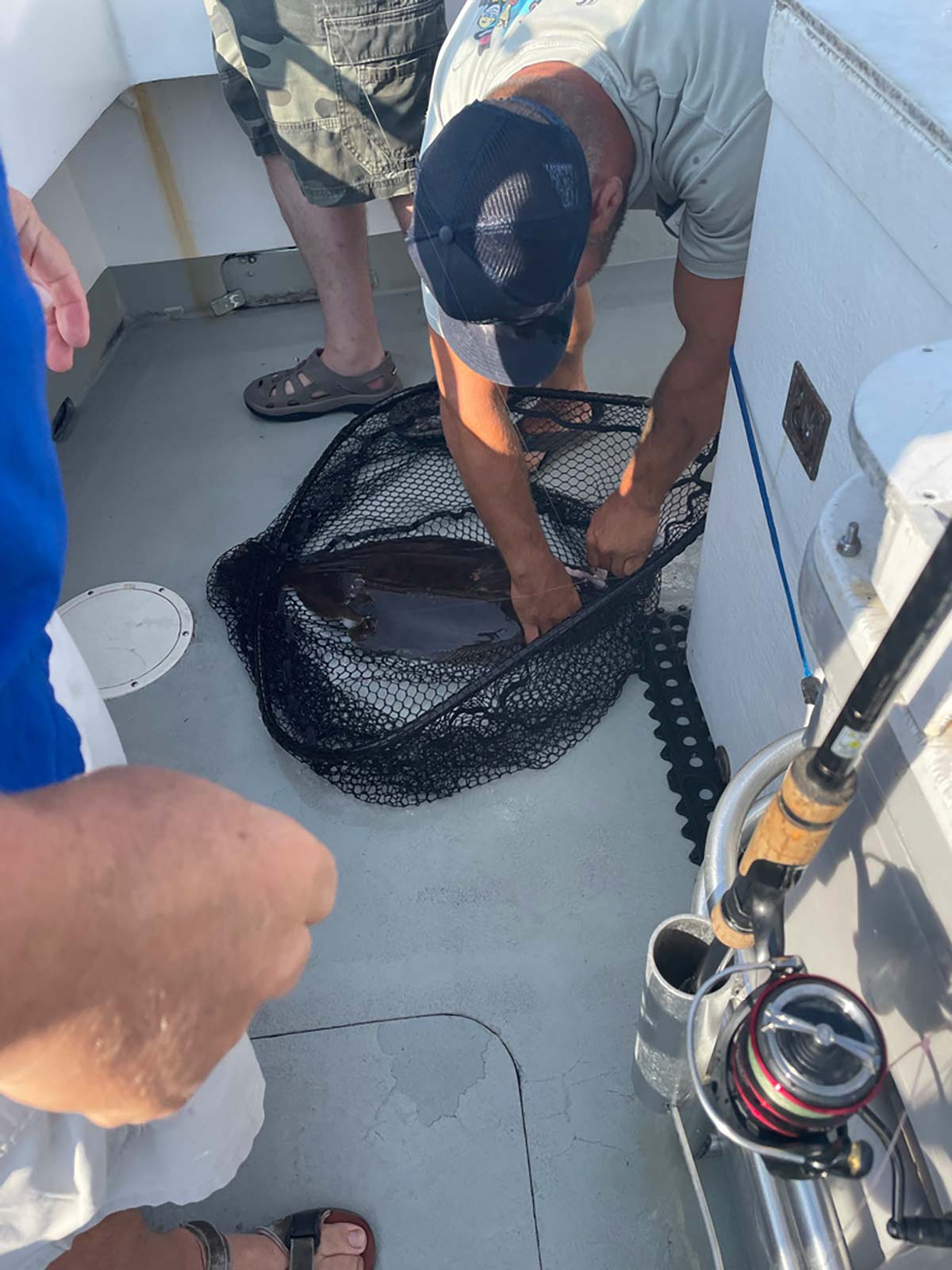
If the tide slacks on a calm day, cast away from the boat and jig your rig back to you. Keep your rig moving as fluke love to crush a bait bouncing along the bottom. Hopping your jig will minimize snags; dragging will get you stuck. Keep in mind that the slightly heavier rod with the Chicken Rig is going be your weapon of choice when the boat drift is putting your rig under the boat. An 8-ounce sinker will keep your line from tangling everyone from the other side as you can work from a very vertical position.
Adjusting to changing drift conditions keeps you in the game all day long. Changes in tide, wind direction and wind speed will have you trying to bounce bottom in an ever-changing scenario throughout the day. Stay on your engine controls with an eye on the plotter and sounder as constant adjustment is part of the game. More adjustment with your gear and rigs will keep you dialed in. Switching down jig weights as the tide slacks and drift slows makes it fun. At slack tide I may be down to a 1-1/2-ounce jig but will work my way back to a 5-ouncer when the speed picks up and I need that weight to bounce bottom.
I will leave you with this: set the hook, reel in your fish but do not pump the rod; this simple adjustment will help slide a few larger fluke into your net!

